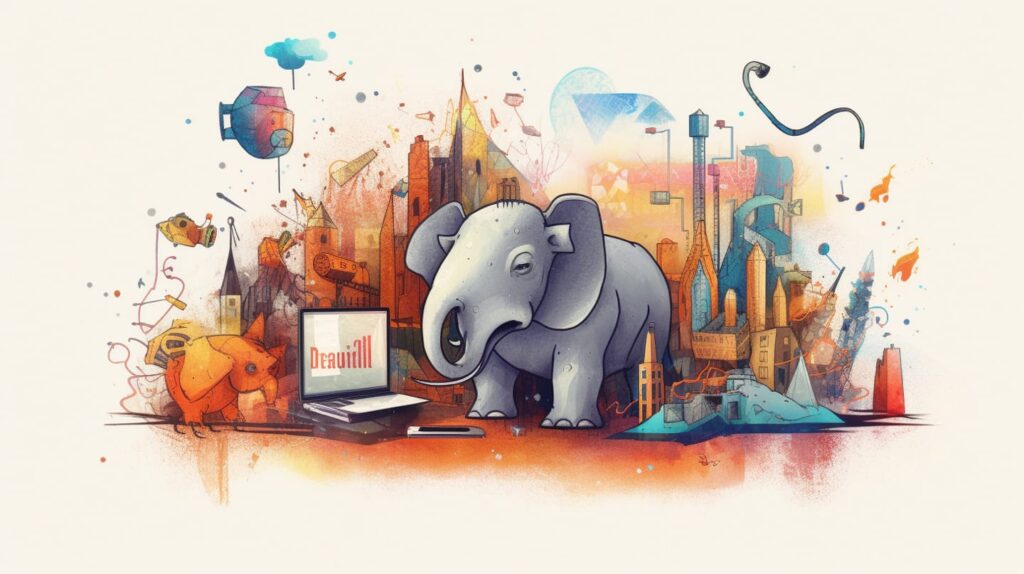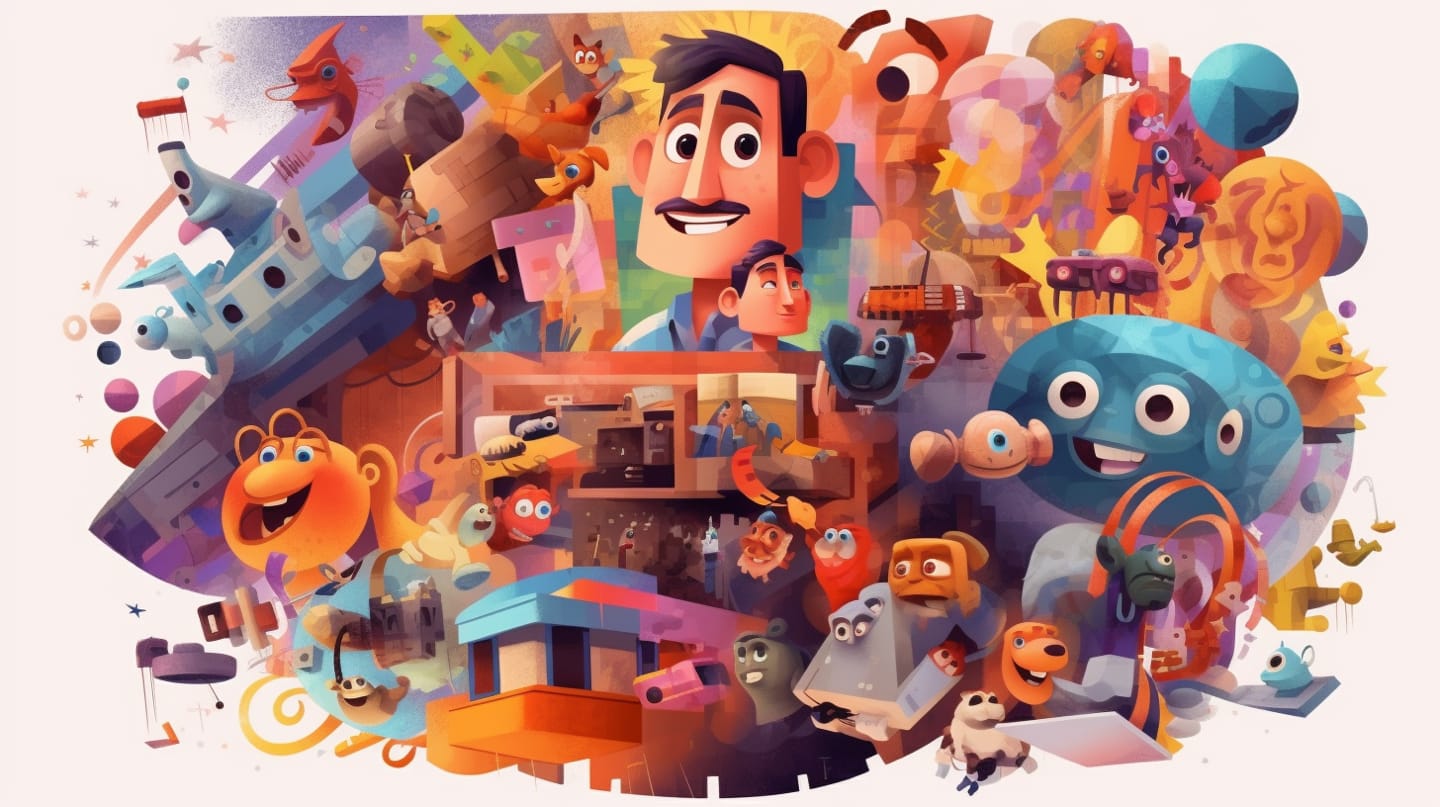Less is More: Why Simple Websites Drive Better Conversions
Let’s be honest, we’ve all been there: landing on a website that seems like a whirlwind of colors, fonts, images, pop-ups, and buttons. It’s the online equivalent of walking into a hoarder’s garage sale. You can’t find what you’re looking for, and within seconds, you’ve clicked the ‘back’ button faster than a squirrel scurrying off with a newly found acorn.
This leads us to a simple, but often overlooked truth: simple websites convert better. Yes, you heard it right. Simple, minimalistic, and clean websites are the stars of the conversion show. They might not be the loudest or the most flamboyant, but they sure do get the job done.

The Beauty of Simplicity
Why do we find simple websites more attractive? It’s because they are considered more beautiful and credible by site visitors. A clean, streamlined website design invites users to stay, explore, and interact just like how a well-plated dish seems more appetizing.
Research supports this, too. Visually complex websites are consistently rated as less beautiful than simpler ones. Our brains are hardwired to appreciate the elegance of simplicity, and we naturally gravitate towards designs that are easy to understand and navigate.
If websites were parties, the simple ones would be the elegant cocktail soirées with a tasteful guest list. On the other hand, complex websites are more like college frat parties – chaotic, noisy, and overwhelming.
Our Mental Image of Websites
Our brains create mental images to categorize different types of websites, much like how we associate pine trees with Christmas or pumpkins with Halloween. Deviations from these mental images can feel off-putting, like finding an ostrich at a penguin party. It’s not that ostriches aren’t cool; they’re just not what we expected.
This is why highly prototypical websites with simple designs are rated the most beautiful. They align with our mental images and meet our design expectations, creating a cozy, familiar feeling for visitors. As a result, users are more likely to trust these websites and engage with their content.
Brains Prefer the Simple Life
Our brains are pretty smart. They prioritize processing important information and filter out unnecessary distractions. It’s like your brain’s personal assistant, keeping your mental inbox clutter-free and only letting the important emails through.
Simplicity in web design caters to this preference. It eliminates the clutter and presents users with the essential elements, making it easy for them to find the information they need. Adding unnecessary copy, images, or complexity detracts from the beauty and effectiveness of a website. It’s like adding too many ingredients to a recipe – the original flavors get lost in the mix.
Invisible Good Design
When done well, good design becomes invisible. It’s the silent hero, subtly guiding users through a website without them even realizing it. It’s like the butler in a classic British mystery novel, always there, but never in the way.
This is why simple and clean designs are more visually appealing to a wider range of people. They make navigation effortless, creating a seamless user experience that keeps visitors coming back for more.
Creativity Within Simplicity
Simplicity doesn’t mean boring. On the contrary, it provides a canvas for creativity to shine through. The choice of visual elements, color schemes, fonts, spacing, and imagery can infuse personality into the design, reflecting your brand’s unique identity.
Just as a minimalist home can be filled with character through carefully chosen decor, a simple website can stand out through thoughtful design elements. The key is to maintain balance – adding just enough flair to captivate visitors without overwhelming them.
Unique Features and Interactive Elements
Even within the realm of simplicity, there’s room for unique features and interactive elements. They add a dash of excitement, create a memorable user experience, and help users remember your brand.
Think of these features as the cherry on top of your minimalist sundae. They’re not the main event but can add that extra touch of delight that keeps users engaged. Examples could be an interactive infographic, a creative menu, or a cleverly designed call-to-action button.

Case in Point: Industry Giants Leading the Way
Let’s talk about some industry giants who’ve championed the cause of simplicity. With its iconic, uncluttered search page, Google is a classic example. Its website design is as straightforward as it gets, yet it’s one of the world’s most recognizable and trusted interfaces.
Apple is another titan that masters simplicity in design. Every element on their website serves a purpose, and the clean, sleek aesthetic reflects the brand’s commitment to minimalistic design and user-friendly technology.
The Statistics Don’t Lie
Numbers speak louder than words, and the statistics affirm the power of simplicity. A study by Google found that users judge a website within 50 milliseconds, and visually complex sites are consistently rated as less beautiful.
Moreover, a survey by HubSpot revealed that 76% of consumers say the most important factor in a website’s design is that “it makes it easy for me to find what I want.” This trumps pure aesthetics and innovative features, reinforcing the value of simplicity in driving conversions.
So, How Can You Simplify Your Website?
Now that we’ve sung the praises of simple websites, you might be wondering how to simplify your own site. Here are a few tips:
- Declutter: Remove any unnecessary elements. If it doesn’t serve a purpose or add value, it’s just taking up space.
- Prioritize: Decide what’s most important and make sure it’s easy to find. This could be your product, your contact information, or a call-to-action.
- Optimize: Make your site as user-friendly as possible. Ensure it loads quickly, is easy to navigate, and looks good on all devices.
- Use whitespace: Don’t be afraid of empty space. It can help guide users’ attention and make your site easier to read.
- Keep it consistent: Use a consistent color scheme, font, and layout across your site. This creates a cohesive look and feel, which helps build trust with your users.
Embrace the Power of Simplicity
In the bustling bazaar of the internet, simplicity stands out. It’s a breath of fresh air amid the chaos, a serene oasis in the desert. So, if you want your website to convert better, it might be time to embrace the power of simplicity.
Remember, the goal isn’t to strip your website bare, but to thoughtfully curate the elements on your site. Like a good book, a well-designed website doesn’t need fancy gimmicks to engage its readers. All it needs is a clean, simple design that serves its purpose and respects its audience. So, let’s toast to simplicity, the unsung hero of high-converting websites!
In the wise words of Leonardo da Vinci, “Simplicity is the ultimate sophistication.” Cheers to that, Leo. Cheers to that.



